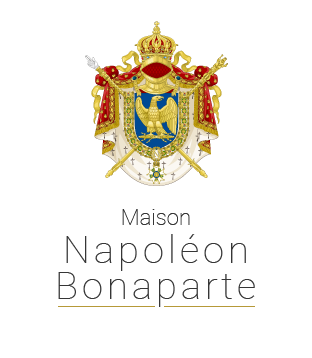FR | EN
THE
BICENTENNIAL
Ceremonies in honour of
the creator of modern France
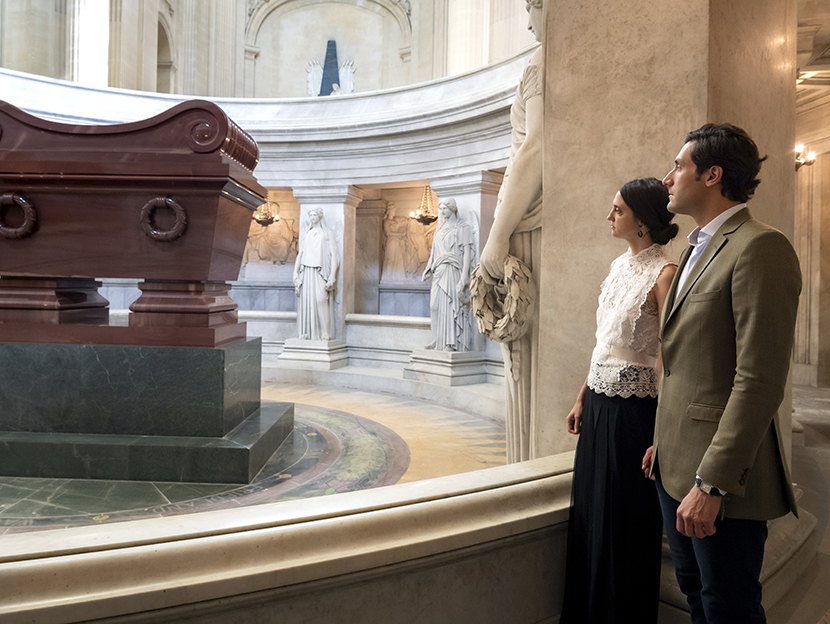
2021 an unforgettable Napoleonic year… everywhere
The Year of Napoleon will take place throughout France, thanks to museums, archives and research institutions, history foundations, imperial towns, delegations of the Napoleonic Remembrance and regional or local institutions such as the Catholic Institute of Vendée, and even abroad, thanks to the Commune of Waterloo and the National Domains of Saint Helena.
A word from Thierry Lentz
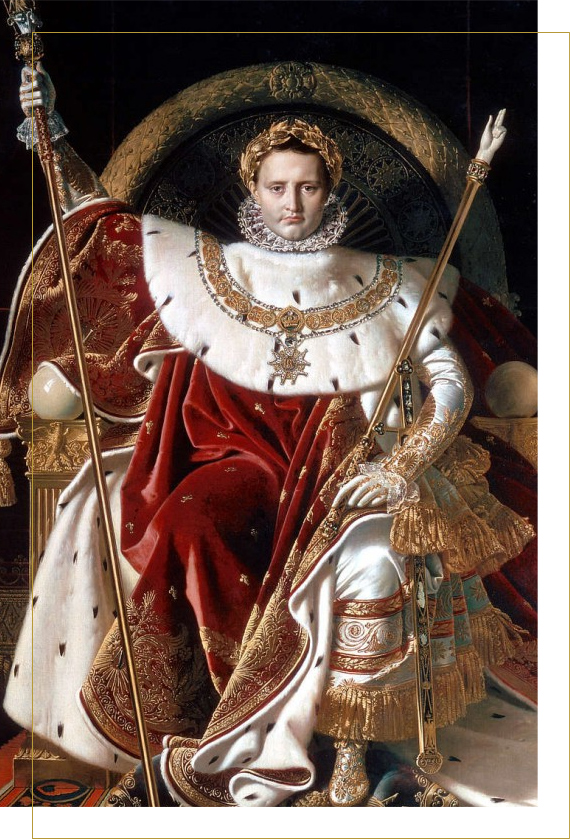
Bicentenary of the death of Napoleon I: beyond the commemorations
2021 will mark the last year of the Napoleonic bicentennials, which began in Toulon a quarter of a century ago. Its high point will obviously be the commemoration of the Emperor’s death on 5 May at Les Invalides, with no doubt even more solemnity than usual. There is no doubt that, whatever configuration is decided upon, many French people will want to be present, physically or in spirit, alongside H.I.H. Prince Napoleon and the civil and military authorities who, for decades, have been paying tribute to the soldiers who died for France during the campaigns of the Consulate and the Empire and to their leader. This commemorative day will be accompanied, preceded and followed by dozens of other events throughout France and even abroad. Many local authorities, institutions and associations have seized the opportunity to take advantage of this ‘Year of Napoleon’ to programme an exhibition, a symposium or conferences, or more popular meetings. The pretexts are varied: to celebrate a period that is almost unique in history, to remember a reign that contributed to the foundation of contemporary France, to take stock of the scientific and historical advances of the last thirty years or, simply to meet—if the health situation allows it—around the memory of the number one character in our history.
On the fringes of this momentum, some people wonder or do not understand why so much energy and resources are being deployed around this bicentenary. Some are of this mind because they live only in the present and want to ignore the fact that a great people also fought around its past and common memories. Others because they judge, in the name of contemporary sensibilities, that Napoleon is too ‘controversial’ a figure to be remembered other than by vilifying him. We would like to respond to these two main categories of bicentenary critics with reasoning and history, without the excessive passions that distort the debate.
To the first, should we repeat here what the First Consul and then the Emperor brought to our country? Should we re-explain how, in a short time but with a fierce will, he made possible the achievements of the ‘societal’ Revolution of 1789? Will we be able to make them understand that beyond the institutions, codes and rules of life in society that have endured for two centuries, Napoleon is still ‘in us’ through the habits of life and the legal rules, in a word ‘the masses of granite’ (the institutions that Emperor Napoleon I founded as he tried to strengthen the State by establishing solid foundations) that he threw down, as he said, ‘on the soil of France’ and on that of most of the countries of Western Europe? Finally, would we be heard if we tried to explain that the ‘Napoleonic’ wars, as intense and murderous as they were, were part of an international life in which peace was the exception and in the line of a project of French preponderance built by the Ancien Régime and continued by the Revolution? If they are willing to attend colloquia or conferences, if they take the trouble to read the most recent research, we may be able, if not to convince them, at least to make them understand why we are so interested in Napoleonic history.
With the latter, we will have more difficulty. They are not driven by disinterest or indifference, but by deeper feelings, often sincere, but also, for a minority of them, by an agenda in which the rejection of Napoleon is only of tactical interest.
These latter, who esteem neither our national unity nor our social organisation, have no desire to discuss matters reasonably and, dare I say, ‘historically’ with us. They are constantly being told that we are incapable of criticism and that there are subjects that Napoleonists, whether historians or associations, would have put ‘under the carpet’: the re-establishment of slavery in 1802, the status of women in the Civil Code, the imperial pseudo ‘dictatorship’ and a few other aspects of Napoleon’s government that are less glowing than others.
We must encourage them to become more familiar with our work and that of our predecessors, to exchange ideas with us and, above all, to agree not to reduce Napoleon to his failures or his unfortunate decisions, which cannot be understood—which is not to excuse—without seriously immersing ourselves in the times and mentalities that were his. Only study, dialogue and the desire to work together will help us to get out of the intellectual impasse in which they would like to trap us.
Without going so far as to say that commemorating Napoleon, obviously with our eyes open, is a right and perhaps even a duty, we could also dream of the miracle that he himself achieved during his lifetime, with his magnificent—albeit firm—policy of national reconciliation: to grasp, turn around and turn over our history together, to recognise our points of agreement and disagreement without, dare I say, violent argument. It is a matter of citizenship.

© Éditions Perrin / Bruno Klein 2020
DIRECTOR OF THE NAPOLEON FOUNDATION
Professor at the Catholic Institute
of Higher Studies (La Roche-Sur-Yon)
Calendar of events
March 2021
31 March to 31 October

The year 2021 will mark the two hundredth anniversary of the death of Emperor Napoleon I. On this occasion, the Musée de l’Armée is proposing a cultural season at Les Invalides entirely dedicated to this major figure in French history. The tomb restored, the permanent exhibition galleries revisited, a major exhibition and, for the first time at the Museum, works by contemporary artists turning on the question of Napoleon’s legacy. Many opportunities to discover or rediscover the man who has been resting under the Dome since 1840, “in the bosom of the French people he loved so much”. Joining forces with the Fondation Napoléon, whose mission is to support and encourage interest in and study of Napoleon I and Napoleon III, the Museum will offer a wide variety of events throughout the year, as well as a new look at the history of the site and the permanent collections linked to Napoleon.
“Napoléon n’est plus” [“Napoleon is no more”],
31 March to 31 October (prolongation) (The actual opening date of the exhibition to the public is not yet known, due to the current sanitary conditions).
A co-production Musée de l’Armée/Fondation Napoléon
April 2021
14 april – 19 september 2021
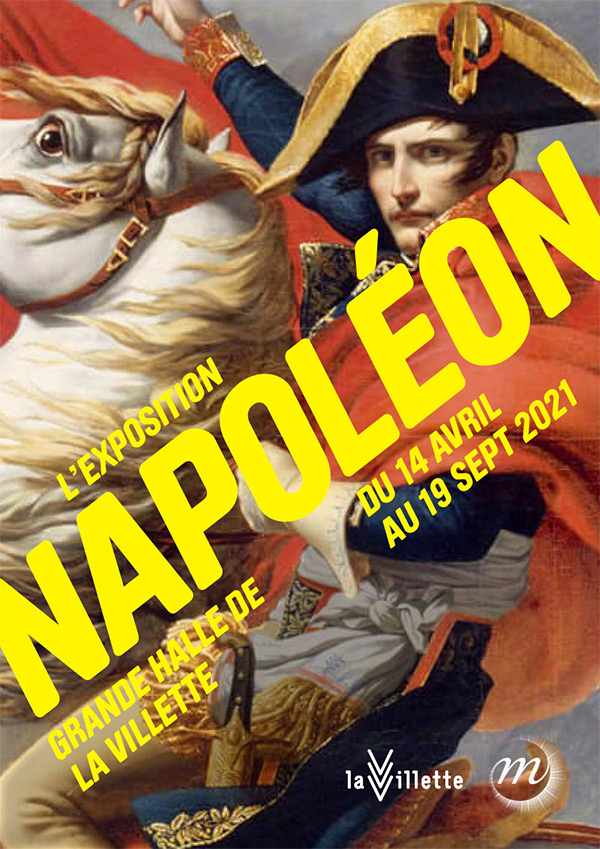 The Réunion des Musées nationaux – Grand Palais, La Villette and Re / Adonis are joining forces to propose a major “Napoleon” exhibition at the Grande Halle de le Villette as part of the bicentenary of Napoleon’s death.
The Réunion des Musées nationaux – Grand Palais, La Villette and Re / Adonis are joining forces to propose a major “Napoleon” exhibition at the Grande Halle de le Villette as part of the bicentenary of Napoleon’s death.
From the historical character to the private man: every facet of his life
This exhibition is built around the following themes: the formative years at the Brienne military school; the campaigns in Italy (1796) and Egypt (1799); the Coup of 18 Brumaire and the Consulate; the emergence of the Empire; Napoleon the private man, his women, Josephine then Marie-Louise, his legitimate son, King of Rome; Napoleon, the military leader; Napoleon and Europe, at the head of which he placed his brothers and sisters; the decline of the Empire, illustrated by two military failures, the Spanish campaign (1808) and the Russian campaign (1812); the Hundred Days and his final fall after the Battle of Waterloo. Prestigious guests will give talks on various subjects, bringing an additional perspective to that of the curators.
Themes include morals and religion, explored by Jacques-Olivier Boudon, the exercise of power with Thierry Lentz and the life and death of soldiers with François Houdecek. A short film by Mathieu Glissant will be screened in a section of the exhibition on the re-establishment of slavery.
The arts and court life through a host of masterpieces
Spectacular reconstitutions will showcase the arts and court life in an era that, though brief at just fifteen years, would have a lasting impact on the decorative arts. Following the Egyptian campaign, pieces of furniture and objets d’art designed in the Egyptian style will be presented, while another room will illustrate the way style evolved at the height of the Empire. A throne room stands alongside a table laid with the most opulent productions. These spaces will be complemented by magnificent court garments, weapons of luxury, decorations, Sèvres porcelain, a selection of goldsmithery and even a monumental carriage commissioned for his marriage to Marie-Louise, as well as the humblest funereal carriage used for his burial on Saint Helena.
Added to these are some of the Emperor’s personal items, as well as the spectacular campaign tent with its original furnishings. War will not be absent either, with a cannon, an ammunition crate, several mannequins and a giant screen with a projection of one of the most famous cavalry charges in the history of France, at the Battle of Eylau. Not to mention the many sculptures that will accompany paintings by the greatest painters of the era, such as David, Gros and Gérard.
May 2021
10 May – 24 October 2021
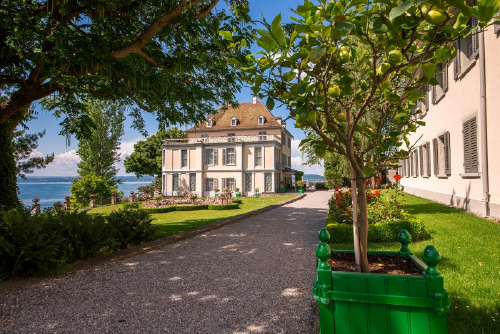
The Château d’Arenenberg , the former home of Hortense de Beauharnais and her sons, now houses the Napoleon Museum of Thurgau, one of the very few German-speaking museums on Napoleonic history. On the occasion of the bicentenary of Napoleon’s death, it is holding a temporary exhibition entitled “1821: Napoleon’s death, St Helena, Arenenberg and the birth of the Napoleonic legend“
Temporary Exhibition 10 May-24 October 2021
As well as the exhibition, marking the bicentenary of Napoleon I’s death, the Napoleonmuseum has decided to revive a memorial garden created by Queen Hortense but which was replaced by a vineyard at the beginning of the 20th century: a willow tree has been planted in the park, recalling that brought back from St Helena and given to Hortense by General Gourgaud, and a plaque inscribed with an N has been placed near the tree
Du 8 may – 18 july 2021
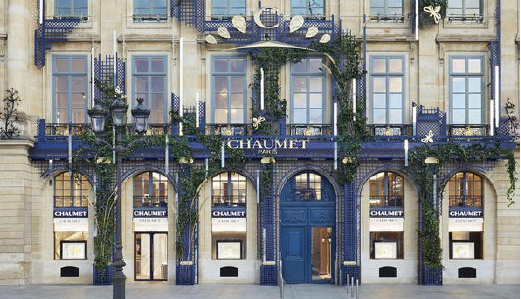
In 2021, the Maison Chaumet is celebrating the bicentenary of the death of Napoleon I with an exceptional exhibition.
Josephine & Napoleon, an (extra)ordinary story
More than 150 works will be on display, including historical and never-before-seen gems, a hundred or so paintings, works of art, letters and archival documents, as well as personal and rare objects related to this beautiful love story, the aim being to plunge visitors into the heart of the matter, power, symbolism, transmission, emotions… An (extra)ordinary story which transcends its own epoch and the Empire becoming legendary and immortal.
This exhibition has been made possible thanks to the support of international museums and private lenders.
An exhibition booklet, written by Pierre Branda, Head of the Heritage Department of the Fondation Napoléon, will be distributed free of charge during the visits.
Maison Chaumet
12 place Vendôme
75001 Paris
5 to 9 may
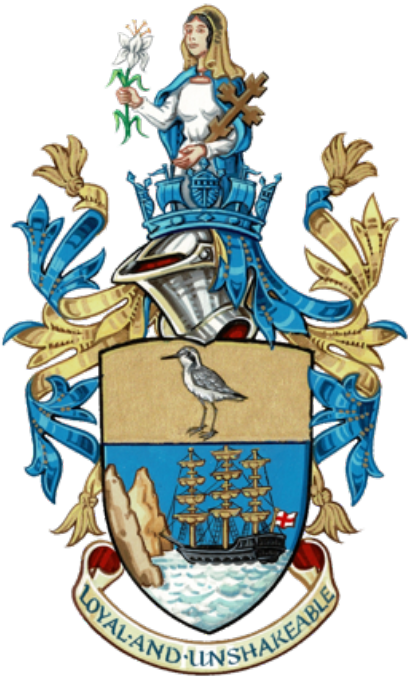 The St Helena Post Office and St Helena Government Customer Services is to issue a series of commemorative stamps on 5 May 2021 on the occasion of the bicentenary of the death of the most famous prisoner ever to be held on the island.
The St Helena Post Office and St Helena Government Customer Services is to issue a series of commemorative stamps on 5 May 2021 on the occasion of the bicentenary of the death of the most famous prisoner ever to be held on the island.
June 2021
25 June 1 – October 2021
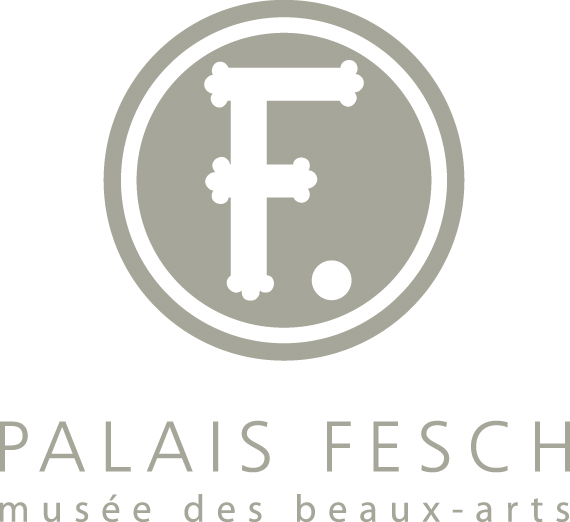
In 2021, the Palais Fesch-musée des Beaux-Arts in Ajaccio, Corsica, is organising an exhibition on the theme of “Napoleon, legends”, on the occasion of the bicentenary of Napoleon’s death, in partnership with the Musée national des châteaux de Malmaison et de Bois-Préaux.
“Napoleon, Legends” 25 June 1 October 2021
Presentation of the exhibition
There is more than one legend of Napoleon. The first, and perhaps the strongest of them, was forged during his lifetime by Bonaparte, the First Consul and the Emperor. The second came later, after the fall of the Empire and Napoleon’s death on St. Helena; from the outset, it was a multifacetted phenomenon that asserted itself and grew thanks to the political context of the Restoration, and at the same time owed part of its growth to the blossoming of the European romantic movement. Conveyed through images, stories, theatre, songs and seditious objects, the Napoleonic legend was initially popular; but by crossing the path of Romanticism, it rose to the highest heights of literature and art from where it influenced the political destiny of France. It forced the return of the hero’s mortal remains to Paris and facilitated the reconquest of power by Bonaparte’s heir. The Napoleonic legend represented the definitive return of the Emperor, which his supporters had so often called for – the return of the Emperor in spirit and thought, so ardently desired by his followers. In 2021, as we commemorate Napoleon’s tragic death on St Helena two hundred years later, the exhibition at the Palais Fesch looks beyond the event to tell the public and readers about the second life of the first French Emperor.
2 June – 30 September 2021
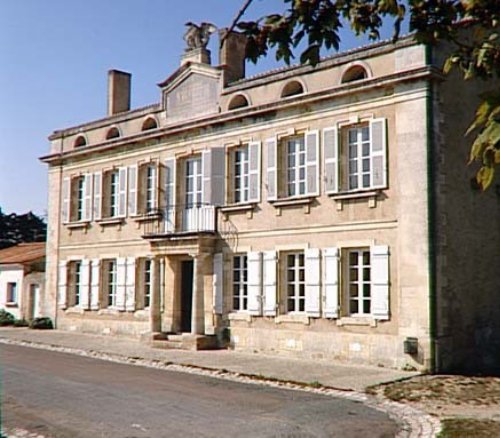
As part of the bicentenary of the death of Napoleon I in 2021, the National Museum on the island of Aix is hosting a temporary exhibition based on the painting Napoleon I dictating his memoirs.
“Taking dication from the Emperor”
2 June – 30 September 2021
The exhibition will comprise a rearrangement of the St Helena room (including a new scenography and new information panels), with the painting by Jean-Baptiste Mauzaisse, Napoleon I dictating his memoirs, as its centrepiece.
Related to the Exhibition
Talk by Christophe Pincemaille, curator of the exhibition, Tuesday 19 or 26 October (date to be confirmed), at the Médiathèque de Rueil (15-21 Boulevard du Maréchal Foch, 92500 Rueil-Malmaison), at 7-30 pm.
Access and entry details to be confirmed.
Musées nationaux napoléonien et africain de l’île d’Aix
17 123 Île d’Aix
Telephone: +33 (0)5 46 84 66 40
July 2021
7 July – 26 August 2021

Amaclio Productions contributes to the promotion of historical heritage through its monumental sound-and-light shows. On the occasion of the bicentenary of Napoleon’s death, the famous show “La Nuit aux Invalides” returns with a brand new edition to commemorate the Emperor with “Napoléon – L’envol de l’Aigle” [“Napoleon – The Flight of the Eagle”]. In the grandiose and emblematic setting of the Cour d’honneur of the Invalides, come and relive the Napoleonic legend with this video-mapping show. Extend your evening with a night visit of the Dome Church, the last residence of the Emperor and his sentinels, Vauban, Lyautey, Foch and the “Aiglon”.
“La Nuit aux Invalides : Napoleon – the flight of the Eagle” 7 July – 26 August 2021
It promises to be THE show of the summer in Paris, a show unique in its history, its grandeur, its cutting-edge technology and the dream it inspires…
Amaclio Productions celebrate this year the 200th anniversary of Napoleon’s death with “The Flight of the Eagle”.
During a mythical evening, come and relive the dazzling career of this man who set the pace in Europe for twenty years.
Come and spend the night at Les Invalides and rediscover the parts of the Emperor’s life that have forged the “Napoleonic legend”, but also the legacy that his epic has left us. An ogre for some, a genius for others, Napoleon leaves no one indifferent.
Prolong the evenign with a walk to the Dôme Church where you will meet Vauban, Lyautey, Foch and the Aiglon whose tombs surround that of the Emperor (supplementary charge for this visit, subject to availability).
Times: 10.30pm in July; 10pm in August.
Esplanade des Invalides – grille d’honneur, Paris
129 rue de Grenelle
75007 Paris
September 2021
September 2021 – February 2022

In 2021, the Mobilier National is celebrating the bicentenary of the death of Napoleon I with an exceptional exhibition and a conference.
For further information, please consult the institution’s website (in French)
Exhibition > “Napoleon I’s Lost Palaces” September 2021 – February 2022
Mobilier National
1, rue Berbier du Mets, 75013 Paris
Telephone: +33 (0)1 44 08 52 71
From 16 September 2021 to 6 March 2022
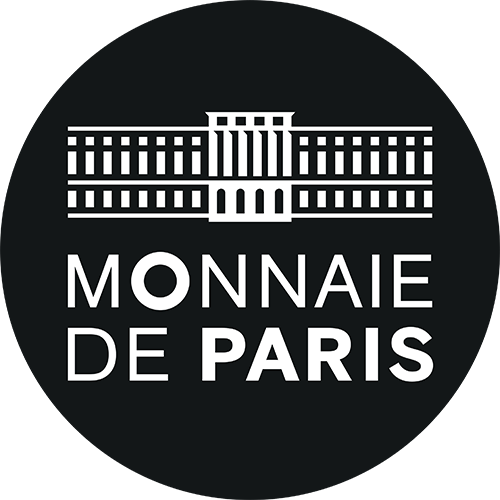
In 2021, the Monnaie de Paris will commemorate the death of Napoleon I via an exhibition presented in its museum.
Exhibition > “In the footsteps of Napoleon I at the Monnaie de Paris”
From 16 September 2021 to 6 March 2022, Tuesday to Sunday, 11am-7pm
The exhibition “In the footsteps of Napoleon I at the Monnaie de Paris” invites visitors to discover both the artistic, technical and scientific role of the Monnaie de Paris during the Directoire, the Consulate and the Empire and its role in the construction and dissemination of the Napoleonic legend during the July Monarchy and the Second Empire.
The public is invited to follow in the footsteps of the Emperor in a fun and educational tour that will encompass the entire Monnaie de Paris site, combining architectural details, the history of the institution, the History of France, the Napoleonic legend, heritage objects from our collections and the savoir faire of our craftsmen and technicians.
The exhibition aims to show that during the Consulate, the Monnaie de Paris became the centre of the First Consul’s ambitions in monetary matters. His visit to the Quai de Conti on 21 Ventôse year XI (12 March 1803) was one of the high points of the history of the Germinal Franc. The scientific and technical staff, artists and craftsmen who worked in this workshop, set up under the Ancien Régime, combined their talents to produce an exceptional coinage with the ultimate aim of building a new France.
The exhibition is also divided into five focal points. The first one highlights the main engravers who worked under the direction of Dominique Vivant Denon. The second is the stylistic evolution of Napoleon Bonaparte’s effigy on his coins and medals, in order to understand its importance for imperial propaganda. A third point focuses on the heraldic and symbolic figure of the Imperial Eagle. A fourth centres on the diplomatic importance of the visits of sovereigns and members of Napoleon I’s family to the Monnaie de Paris. Finally, the fifth focal point shows the creation of the Order of the Legion of Honour and the way in which the art of the medal illustrated its impact on the society of the time.
Musée de la Monnaie de Paris
Entrance at 11 Quai de Conti
Entrance at 2 rue Guénégaud
75006 Paris, France
Useful links
Napoleon Foundation
www.fondationnapoleon.org : the Fondation Napoléon promotes research into the history of the Consulate, the First and Second Empires, access to knowledge and participates in the preservation of the heritage.
Friends of Napoleon III – Second Empire Historical Society
www.napoleon3-secondempire.org : the Friends of Napoleon III, aims to give the Emperor Napoleon III and the Second Empire period the historical place in the genesis of modern civilization.
Napoleonic Memory
www.souvenirnapoleonien.org : Created on December 27, 1937, the Souvenir Napoléonien is the most important Napoleonic association in Europe, recognized as being of public utility by ministerial decree of November 5, 1982. Its aim is to study and publicize the institutions, places, events and people who made the history of the First and Second Empire there.
Sites and museums
Army Museum
www.musee-armee.fr : The Army Museum holds one of the richest collections of military history in the world. Discover the uniforms, weapons, drawings, paintings, everyday objects, which illustrate the history of France, from prehistory to the present day.
National Museum of Malmaison Castle
musees-nationaux-malmaison.fr/chateau-malmaison : In the fall of 1802 the consul and his family moved to Saint-Cloud and Joséphine often returned to the « Imperial Palace of Malmaison » to develop and expand the estate. After the divorce in 1809, the Emperor gave her this property with all its collections and it was in Malmaison that she died on May 29, 1814.
Napoleon Brienne-le-Château Museum
www.musee-napoleon-brienne.fr : Musée Napoléon, 34 rue de l’Ecole Militaire 10500 Brienne-le-Château.
Napoleon Museum of the Pommerie
www.musee-napoleon.fr : Musée Napoléon – La Pommerie – 24380 Cendrieux.
Bonaparte House National Museum
www.musees-nationaux-malmaison.fr/musee-maisonbonaparte : Musée national de la maison Bonaparte Rue Saint-Charles 20000 Ajaccio.
National Museum of the island of Aix
Musées de l’île d’Aix – Musée napoléonien – 17 123 Ile d’Aix
Fontainebleau Castle
www.chateaudefontainebleau.fr : « True home of kings, house of centuries », as Napoleon I liked to say, the castle was a place of residence for French sovereigns from the Middle Ages until the end of the 19th century with Napoleon III. »
Compiègne Castle
chateaudecompiegne.fr : The Palace of Compiègne is a former royal and imperial residence located in Compiègne . The Palais de Compiègne has been classified as a historical monument since October 24, 1994.
Grand Chancellery of the Legion of Honor
www.legiondhonneur.fr : Founded in 1802, the Grand Chancellery provides three public service activities: administration of national awards, management of educational institutions and the Legion of Honor museum.
FR | EN
2021 an unforgettable Napoleonic year… everywhere
The Year of Napoleon will take place throughout France, thanks to museums, archives and research institutions, history foundations, imperial towns, delegations of the Napoleonic Remembrance and regional or local institutions such as the Catholic Institute of Vendée, and even abroad, thanks to the Commune of Waterloo and the National Domains of Saint Helena.

A word from Thierry Lentz
Bicentenary of the death of Napoleon I: beyond the commemorations
2021 will mark the last year of the Napoleonic bicentennials, which began in Toulon a quarter of a century ago. Its high point will obviously be the commemoration of the Emperor’s death on 5 May at Les Invalides, with no doubt even more solemnity than usual. There is no doubt that, whatever configuration is decided upon, many French people will want to be present, physically or in spirit, alongside H.I.H. Prince Napoleon and the civil and military authorities who, for decades, have been paying tribute to the soldiers who died for France during the campaigns of the Consulate and the Empire and to their leader. This commemorative day will be accompanied, preceded and followed by dozens of other events throughout France and even abroad. Many local authorities, institutions and associations have seized the opportunity to take advantage of this ‘Year of Napoleon’ to programme an exhibition, a symposium or conferences, or more popular meetings. The pretexts are varied: to celebrate a period that is almost unique in history, to remember a reign that contributed to the foundation of contemporary France, to take stock of the scientific and historical advances of the last thirty years or, simply to meet—if the health situation allows it—around the memory of the number one character in our history.
On the fringes of this momentum, some people wonder or do not understand why so much energy and resources are being deployed around this bicentenary. Some are of this mind because they live only in the present and want to ignore the fact that a great people also fought around its past and common memories. Others because they judge, in the name of contemporary sensibilities, that Napoleon is too ‘controversial’ a figure to be remembered other than by vilifying him. We would like to respond to these two main categories of bicentenary critics with reasoning and history, without the excessive passions that distort the debate.
To the first, should we repeat here what the First Consul and then the Emperor brought to our country? Should we re-explain how, in a short time but with a fierce will, he made possible the achievements of the ‘societal’ Revolution of 1789? Will we be able to make them understand that beyond the institutions, codes and rules of life in society that have endured for two centuries, Napoleon is still ‘in us’ through the habits of life and the legal rules, in a word ‘the masses of granite’ (the institutions that Emperor Napoleon I founded as he tried to strengthen the State by establishing solid foundations) that he threw down, as he said, ‘on the soil of France’ and on that of most of the countries of Western Europe? Finally, would we be heard if we tried to explain that the ‘Napoleonic’ wars, as intense and murderous as they were, were part of an international life in which peace was the exception and in the line of a project of French preponderance built by the Ancien Régime and continued by the Revolution? If they are willing to attend colloquia or conferences, if they take the trouble to read the most recent research, we may be able, if not to convince them, at least to make them understand why we are so interested in Napoleonic history.
With the latter, we will have more difficulty. They are not driven by disinterest or indifference, but by deeper feelings, often sincere, but also, for a minority of them, by an agenda in which the rejection of Napoleon is only of tactical interest.
These latter, who esteem neither our national unity nor our social organisation, have no desire to discuss matters reasonably and, dare I say, ‘historically’ with us. They are constantly being told that we are incapable of criticism and that there are subjects that Napoleonists, whether historians or associations, would have put ‘under the carpet’: the re-establishment of slavery in 1802, the status of women in the Civil Code, the imperial pseudo ‘dictatorship’ and a few other aspects of Napoleon’s government that are less glowing than others.
We must encourage them to become more familiar with our work and that of our predecessors, to exchange ideas with us and, above all, to agree not to reduce Napoleon to his failures or his unfortunate decisions, which cannot be understood—which is not to excuse—without seriously immersing ourselves in the times and mentalities that were his. Only study, dialogue and the desire to work together will help us to get out of the intellectual impasse in which they would like to trap us.
Without going so far as to say that commemorating Napoleon, obviously with our eyes open, is a right and perhaps even a duty, we could also dream of the miracle that he himself achieved during his lifetime, with his magnificent—albeit firm—policy of national reconciliation: to grasp, turn around and turn over our history together, to recognise our points of agreement and disagreement without, dare I say, violent argument. It is a matter of citizenship.
DIRECTOR OF THE NAPOLEON FOUNDATION
Professor at the Catholic Institute of
Higher Studies (La Roche-Sur-Yon)

© Éditions Perrin /
Bruno Klein 2020
Calendar of events
March 2021
31 March to 31 October

The year 2021 will mark the two hundredth anniversary of the death of Emperor Napoleon I. On this occasion, the Musée de l’Armée is proposing a cultural season at Les Invalides entirely dedicated to this major figure in French history. The tomb restored, the permanent exhibition galleries revisited, a major exhibition and, for the first time at the Museum, works by contemporary artists turning on the question of Napoleon’s legacy. Many opportunities to discover or rediscover the man who has been resting under the Dome since 1840, “in the bosom of the French people he loved so much”. Joining forces with the Fondation Napoléon, whose mission is to support and encourage interest in and study of Napoleon I and Napoleon III, the Museum will offer a wide variety of events throughout the year, as well as a new look at the history of the site and the permanent collections linked to Napoleon.
“Napoléon n’est plus” [“Napoleon is no more”],
31 March to 31 October (prolongation) (The actual opening date of the exhibition to the public is not yet known, due to the current sanitary conditions).
A co-production Musée de l’Armée/Fondation Napoléon
April 2021
14 april – 19 september 2021

The Réunion des Musées nationaux – Grand Palais, La Villette and Re / Adonis are joining forces to propose a major “Napoleon” exhibition at the Grande Halle de le Villette as part of the bicentenary of Napoleon’s death.
From the historical character to the private man: every facet of his life
This exhibition is built around the following themes: the formative years at the Brienne military school; the campaigns in Italy (1796) and Egypt (1799); the Coup of 18 Brumaire and the Consulate; the emergence of the Empire; Napoleon the private man, his women, Josephine then Marie-Louise, his legitimate son, King of Rome; Napoleon, the military leader; Napoleon and Europe, at the head of which he placed his brothers and sisters; the decline of the Empire, illustrated by two military failures, the Spanish campaign (1808) and the Russian campaign (1812); the Hundred Days and his final fall after the Battle of Waterloo. Prestigious guests will give talks on various subjects, bringing an additional perspective to that of the curators.
Themes include morals and religion, explored by Jacques-Olivier Boudon, the exercise of power with Thierry Lentz and the life and death of soldiers with François Houdecek. A short film by Mathieu Glissant will be screened in a section of the exhibition on the re-establishment of slavery.
The arts and court life through a host of masterpieces
Spectacular reconstitutions will showcase the arts and court life in an era that, though brief at just fifteen years, would have a lasting impact on the decorative arts. Following the Egyptian campaign, pieces of furniture and objets d’art designed in the Egyptian style will be presented, while another room will illustrate the way style evolved at the height of the Empire. A throne room stands alongside a table laid with the most opulent productions. These spaces will be complemented by magnificent court garments, weapons of luxury, decorations, Sèvres porcelain, a selection of goldsmithery and even a monumental carriage commissioned for his marriage to Marie-Louise, as well as the humblest funereal carriage used for his burial on Saint Helena.
Added to these are some of the Emperor’s personal items, as well as the spectacular campaign tent with its original furnishings. War will not be absent either, with a cannon, an ammunition crate, several mannequins and a giant screen with a projection of one of the most famous cavalry charges in the history of France, at the Battle of Eylau. Not to mention the many sculptures that will accompany paintings by the greatest painters of the era, such as David, Gros and Gérard.
May 2021
10 May – 24 October 2021

The Château d’Arenenberg , the former home of Hortense de Beauharnais and her sons, now houses the Napoleon Museum of Thurgau, one of the very few German-speaking museums on Napoleonic history. On the occasion of the bicentenary of Napoleon’s death, it is holding a temporary exhibition entitled “1821: Napoleon’s death, St Helena, Arenenberg and the birth of the Napoleonic legend“
Temporary Exhibition 10 May-24 October 2021
As well as the exhibition, marking the bicentenary of Napoleon I’s death, the Napoleonmuseum has decided to revive a memorial garden created by Queen Hortense but which was replaced by a vineyard at the beginning of the 20th century: a willow tree has been planted in the park, recalling that brought back from St Helena and given to Hortense by General Gourgaud, and a plaque inscribed with an N has been placed near the tree.
8 may – 18 july 2021

In 2021, the Maison Chaumet is celebrating the bicentenary of the death of Napoleon I with an exceptional exhibition.
Josephine & Napoleon, an (extra)ordinary story
More than 150 works will be on display, including historical and never-before-seen gems, a hundred or so paintings, works of art, letters and archival documents, as well as personal and rare objects related to this beautiful love story, the aim being to plunge visitors into the heart of the matter, power, symbolism, transmission, emotions… An (extra)ordinary story which transcends its own epoch and the Empire becoming legendary and immortal.
This exhibition has been made possible thanks to the support of international museums and private lenders.
An exhibition booklet, written by Pierre Branda, Head of the Heritage Department of the Fondation Napoléon, will be distributed free of charge during the visits.
Maison Chaumet
12 place Vendôme
75001 Paris
5 – 9 may

The St Helena Post Office and St Helena Government Customer Services is to issue a series of commemorative stamps on 5 May 2021 on the occasion of the bicentenary of the death of the most famous prisoner ever to be held on the island.
June 2021
25 June – 1 October 2021

In 2021, the Palais Fesch-musée des Beaux-Arts in Ajaccio, Corsica, is organising an exhibition on the theme of “Napoleon, legends”, on the occasion of the bicentenary of Napoleon’s death, in partnership with the Musée national des châteaux de Malmaison et de Bois-Préaux.
“Napoleon, Legends” 25 June 1 October 2021
There is more than one legend of Napoleon. The first, and perhaps the strongest of them, was forged during his lifetime by Bonaparte, the First Consul and the Emperor. The second came later, after the fall of the Empire and Napoleon’s death on St. Helena; from the outset, it was a multifacetted phenomenon that asserted itself and grew thanks to the political context of the Restoration, and at the same time owed part of its growth to the blossoming of the European romantic movement. Conveyed through images, stories, theatre, songs and seditious objects, the Napoleonic legend was initially popular; but by crossing the path of Romanticism, it rose to the highest heights of literature and art from where it influenced the political destiny of France. It forced the return of the hero’s mortal remains to Paris and facilitated the reconquest of power by Bonaparte’s heir. The Napoleonic legend represented the definitive return of the Emperor, which his supporters had so often called for – the return of the Emperor in spirit and thought, so ardently desired by his followers. In 2021, as we commemorate Napoleon’s tragic death on St Helena two hundred years later, the exhibition at the Palais Fesch looks beyond the event to tell the public and readers about the second life of the first French Emperor.
2 June – 30 September 2021

As part of the bicentenary of the death of Napoleon I in 2021, the National Museum on the island of Aix is hosting a temporary exhibition based on the painting Napoleon I dictating his memoirs.
“Taking dication from the Emperor”
2 June – 30 September 2021
The exhibition will comprise a rearrangement of the St Helena room (including a new scenography and new information panels), with the painting by Jean-Baptiste Mauzaisse, Napoleon I dictating his memoirs, as its centrepiece.
Related to the Exhibition
Talk by Christophe Pincemaille, curator of the exhibition, Tuesday 19 or 26 October (date to be confirmed), at the Médiathèque de Rueil (15-21 Boulevard du Maréchal Foch, 92500 Rueil-Malmaison), at 7-30 pm.
Access and entry details to be confirmed.
Musées nationaux napoléonien et africain de l’île d’Aix
17 123 Île d’Aix
Telephone: +33 (0)5 46 84 66 40
July 2021
7 July – 26 August 2021

It promises to be THE show of the summer in Paris, a show unique in its history, its grandeur, its cutting-edge technology and the dream it inspires…
Amaclio Productions celebrate this year the 200th anniversary of Napoleon’s death with “The Flight of the Eagle”.
During a mythical evening, come and relive the dazzling career of this man who set the pace in Europe for twenty years.
Come and spend the night at Les Invalides and rediscover the parts of the Emperor’s life that have forged the “Napoleonic legend”, but also the legacy that his epic has left us. An ogre for some, a genius for others, Napoleon leaves no one indifferent.
Prolong the evenign with a walk to the Dôme Church where you will meet Vauban, Lyautey, Foch and the Aiglon whose tombs surround that of the Emperor (supplementary charge for this visit, subject to availability).
Times: 10.30pm in July; 10pm in August.
Esplanade des Invalides – grille d’honneur, Paris
129 rue de Grenelle
75007 Paris
September 2021
September 2021 – February 2022

In 2021, the Mobilier National is celebrating the bicentenary of the death of Napoleon I with an exceptional exhibition and a conference.
For further information, please consult the institution’s website (in French)
Exhibition > “Napoleon I’s Lost Palaces”
September 2021 – February 2022
Mobilier National
1, rue Berbier du Mets, 75013 Paris
Telephone: +33 (0)1 44 08 52 71
From 16 September 2021 to 6 March 2022

In 2021, the Monnaie de Paris will commemorate the death of Napoleon I via an exhibition presented in its museum.
Exhibition > “In the footsteps of Napoleon I at the Monnaie de Paris”
From 16 September 2021 to 6 March 2022, Tuesday to Sunday, 11am-7pm
The exhibition “In the footsteps of Napoleon I at the Monnaie de Paris” invites visitors to discover both the artistic, technical and scientific role of the Monnaie de Paris during the Directoire, the Consulate and the Empire and its role in the construction and dissemination of the Napoleonic legend during the July Monarchy and the Second Empire.
The public is invited to follow in the footsteps of the Emperor in a fun and educational tour that will encompass the entire Monnaie de Paris site, combining architectural details, the history of the institution, the History of France, the Napoleonic legend, heritage objects from our collections and the savoir faire of our craftsmen and technicians.
The exhibition aims to show that during the Consulate, the Monnaie de Paris became the centre of the First Consul’s ambitions in monetary matters. His visit to the Quai de Conti on 21 Ventôse year XI (12 March 1803) was one of the high points of the history of the Germinal Franc. The scientific and technical staff, artists and craftsmen who worked in this workshop, set up under the Ancien Régime, combined their talents to produce an exceptional coinage with the ultimate aim of building a new France.
The exhibition is also divided into five focal points. The first one highlights the main engravers who worked under the direction of Dominique Vivant Denon. The second is the stylistic evolution of Napoleon Bonaparte’s effigy on his coins and medals, in order to understand its importance for imperial propaganda. A third point focuses on the heraldic and symbolic figure of the Imperial Eagle. A fourth centres on the diplomatic importance of the visits of sovereigns and members of Napoleon I’s family to the Monnaie de Paris. Finally, the fifth focal point shows the creation of the Order of the Legion of Honour and the way in which the art of the medal illustrated its impact on the society of the time.
Musée de la Monnaie de Paris
Entrance at 11 Quai de Conti
Entrance at 2 rue Guénégaud
75006 Paris, France
Around the bicentenary
Useful links
Napoleon Foundation
www.fondationnapoleon.org : the Fondation Napoléon promotes research into the history of the Consulate, the First and Second Empires, access to knowledge and participates in the preservation of the heritage.
Friends of Napoleon III – Second Empire Historical Society
www.napoleon3-secondempire.org : the Friends of Napoleon III, aims to give the Emperor Napoleon III and the Second Empire period the historical place in the genesis of modern civilization.
Napoleonic Memory
www.souvenirnapoleonien.org : Created on December 27, 1937, the Souvenir Napoléonien is the most important Napoleonic association in Europe, recognized as being of public utility by ministerial decree of November 5, 1982. Its aim is to study and publicize the institutions, places, events and people who made the history of the First and Second Empire there.
Sites and museums
Army Museum
www.musee-armee.fr : The Army Museum holds one of the richest collections of military history in the world. Discover the uniforms, weapons, drawings, paintings, everyday objects, which illustrate the history of France, from prehistory to the present day.
National Museum of Malmaison Castle
musees-nationaux-malmaison.fr/chateau-malmaison : In the fall of 1802 the consul and his family moved to Saint-Cloud and Joséphine often returned to the « Imperial Palace of Malmaison » to develop and expand the estate. After the divorce in 1809, the Emperor gave her this property with all its collections and it was in Malmaison that she died on May 29, 1814.
Napoleon Brienne-le-Château Museum
www.musee-napoleon-brienne.fr : Musée Napoléon, 34 rue de l’Ecole Militaire 10500 Brienne-le-Château.
Napoleon Museum of the Pommerie
www.musee-napoleon.fr : Musée Napoléon – La Pommerie – 24380 Cendrieux.
Bonaparte House National Museum
www.musees-nationaux-malmaison.fr/musee-maisonbonaparte : Musée national de la maison Bonaparte Rue Saint-Charles 20000 Ajaccio.
National Museum of the island of Aix
Musées de l’île d’Aix – Musée napoléonien – 17 123 Ile d’Aix
Fontainebleau Castle
www.chateaudefontainebleau.fr : « True home of kings, house of centuries », as Napoleon I liked to say, the castle was a place of residence for French sovereigns from the Middle Ages until the end of the 19th century with Napoleon III. »
Compiègne Castle
chateaudecompiegne.fr : The Palace of Compiègne is a former royal and imperial residence located in Compiègne . The Palais de Compiègne has been classified as a historical monument since October 24, 1994.
Grand Chancellery of the Legion of Honor
www.legiondhonneur.fr : Founded in 1802, the Grand Chancellery provides three public service activities: administration of national awards, management of educational institutions and the Legion of Honor museum.
FR | EN
HOME > THE BICENTENNIAL

2021 an unforgettable Napoleonic year… everywhere
The Year of Napoleon will take place throughout France, thanks to museums, archives and research institutions, history foundations, imperial towns, delegations of the Napoleonic Remembrance and regional or local institutions such as the Catholic Institute of Vendée, and even abroad, thanks to the Commune of Waterloo and the National Domains of Saint Helena.

A word from Thierry Lentz
Bicentenary of the death of Napoleon I: beyond the commemorations
2021 will mark the last year of the Napoleonic bicentennials, which began in Toulon a quarter of a century ago. Its high point will obviously be the commemoration of the Emperor’s death on 5 May at Les Invalides, with no doubt even more solemnity than usual. There is no doubt that, whatever configuration is decided upon, many French people will want to be present, physically or in spirit, alongside H.I.H. Prince Napoleon and the civil and military authorities who, for decades, have been paying tribute to the soldiers who died for France during the campaigns of the Consulate and the Empire and to their leader. This commemorative day will be accompanied, preceded and followed by dozens of other events throughout France and even abroad. Many local authorities, institutions and associations have seized the opportunity to take advantage of this ‘Year of Napoleon’ to programme an exhibition, a symposium or conferences, or more popular meetings. The pretexts are varied: to celebrate a period that is almost unique in history, to remember a reign that contributed to the foundation of contemporary France, to take stock of the scientific and historical advances of the last thirty years or, simply to meet—if the health situation allows it—around the memory of the number one character in our history.
On the fringes of this momentum, some people wonder or do not understand why so much energy and resources are being deployed around this bicentenary. Some are of this mind because they live only in the present and want to ignore the fact that a great people also fought around its past and common memories. Others because they judge, in the name of contemporary sensibilities, that Napoleon is too ‘controversial’ a figure to be remembered other than by vilifying him. We would like to respond to these two main categories of bicentenary critics with reasoning and history, without the excessive passions that distort the debate.
To the first, should we repeat here what the First Consul and then the Emperor brought to our country? Should we re-explain how, in a short time but with a fierce will, he made possible the achievements of the ‘societal’ Revolution of 1789? Will we be able to make them understand that beyond the institutions, codes and rules of life in society that have endured for two centuries, Napoleon is still ‘in us’ through the habits of life and the legal rules, in a word ‘the masses of granite’ (the institutions that Emperor Napoleon I founded as he tried to strengthen the State by establishing solid foundations) that he threw down, as he said, ‘on the soil of France’ and on that of most of the countries of Western Europe? Finally, would we be heard if we tried to explain that the ‘Napoleonic’ wars, as intense and murderous as they were, were part of an international life in which peace was the exception and in the line of a project of French preponderance built by the Ancien Régime and continued by the Revolution? If they are willing to attend colloquia or conferences, if they take the trouble to read the most recent research, we may be able, if not to convince them, at least to make them understand why we are so interested in Napoleonic history.
With the latter, we will have more difficulty. They are not driven by disinterest or indifference, but by deeper feelings, often sincere, but also, for a minority of them, by an agenda in which the rejection of Napoleon is only of tactical interest.
These latter, who esteem neither our national unity nor our social organisation, have no desire to discuss matters reasonably and, dare I say, ‘historically’ with us. They are constantly being told that we are incapable of criticism and that there are subjects that Napoleonists, whether historians or associations, would have put ‘under the carpet’: the re-establishment of slavery in 1802, the status of women in the Civil Code, the imperial pseudo ‘dictatorship’ and a few other aspects of Napoleon’s government that are less glowing than others.
We must encourage them to become more familiar with our work and that of our predecessors, to exchange ideas with us and, above all, to agree not to reduce Napoleon to his failures or his unfortunate decisions, which cannot be understood—which is not to excuse—without seriously immersing ourselves in the times and mentalities that were his. Only study, dialogue and the desire to work together will help us to get out of the intellectual impasse in which they would like to trap us.
Without going so far as to say that commemorating Napoleon, obviously with our eyes open, is a right and perhaps even a duty, we could also dream of the miracle that he himself achieved during his lifetime, with his magnificent—albeit firm—policy of national reconciliation: to grasp, turn around and turn over our history together, to recognise our points of agreement and disagreement without, dare I say, violent argument. It is a matter of citizenship.
DIRECTOR OF THE NAPOLEON FOUNDATION
Professor at the Catholic Institute of
Higher Studies (La Roche-Sur-Yon)

© Éditions Perrin / Bruno Klein 2020
Calendar of events
March 2021
31 March to 31 October

The year 2021 will mark the two hundredth anniversary of the death of Emperor Napoleon I. On this occasion, the Musée de l’Armée is proposing a cultural season at Les Invalides entirely dedicated to this major figure in French history. The tomb restored, the permanent exhibition galleries revisited, a major exhibition and, for the first time at the Museum, works by contemporary artists turning on the question of Napoleon’s legacy. Many opportunities to discover or rediscover the man who has been resting under the Dome since 1840, “in the bosom of the French people he loved so much”. Joining forces with the Fondation Napoléon, whose mission is to support and encourage interest in and study of Napoleon I and Napoleon III, the Museum will offer a wide variety of events throughout the year, as well as a new look at the history of the site and the permanent collections linked to Napoleon.
“Napoléon n’est plus” [“Napoleon is no more”],
(The actual opening date of the exhibition to the public is not yet known, due to the current sanitary conditions).
A co-production Musée de l’Armée/Fondation Napoléon
April 2021
14 april – 19 september 2021
 The Réunion des Musées nationaux – Grand Palais, La Villette and Re / Adonis are joining forces to propose a major “Napoleon” exhibition at the Grande Halle de le Villette as part of the bicentenary of Napoleon’s death.
The Réunion des Musées nationaux – Grand Palais, La Villette and Re / Adonis are joining forces to propose a major “Napoleon” exhibition at the Grande Halle de le Villette as part of the bicentenary of Napoleon’s death.
From the historical character to the private man: every facet of his life
This exhibition is built around the following themes: the formative years at the Brienne military school; the campaigns in Italy (1796) and Egypt (1799); the Coup of 18 Brumaire and the Consulate; the emergence of the Empire; Napoleon the private man, his women, Josephine then Marie-Louise, his legitimate son, King of Rome; Napoleon, the military leader; Napoleon and Europe, at the head of which he placed his brothers and sisters; the decline of the Empire, illustrated by two military failures, the Spanish campaign (1808) and the Russian campaign (1812); the Hundred Days and his final fall after the Battle of Waterloo. Prestigious guests will give talks on various subjects, bringing an additional perspective to that of the curators.
Themes include morals and religion, explored by Jacques-Olivier Boudon, the exercise of power with Thierry Lentz and the life and death of soldiers with François Houdecek. A short film by Mathieu Glissant will be screened in a section of the exhibition on the re-establishment of slavery.
May 2021
10 may – 24 october 2021

The Château d’Arenenberg , the former home of Hortense de Beauharnais and her sons, now houses the Napoleon Museum of Thurgau, one of the very few German-speaking museums on Napoleonic history. On the occasion of the bicentenary of Napoleon’s death, it is holding a temporary exhibition entitled “1821: Napoleon’s death, St Helena, Arenenberg and the birth of the Napoleonic legend“
Temporary Exhibition
As well as the exhibition, marking the bicentenary of Napoleon I’s death, the Napoleonmuseum has decided to revive a memorial garden created by Queen Hortense but which was replaced by a vineyard at the beginning of the 20th century: a willow tree has been planted in the park, recalling that brought back from St Helena and given to Hortense by General Gourgaud, and a plaque inscribed with an N has been placed near the tree.
18 may – 18 july 2021

In 2021, the Maison Chaumet is celebrating the bicentenary of the death of Napoleon I with an exceptional exhibition.
Josephine & Napoleon, an (extra)ordinary story
More than 150 works will be on display, including historical and never-before-seen gems, a hundred or so paintings, works of art, letters and archival documents, as well as personal and rare objects related to this beautiful love story, the aim being to plunge visitors into the heart of the matter, power, symbolism, transmission, emotions… An (extra)ordinary story which transcends its own epoch and the Empire becoming legendary and immortal.
This exhibition has been made possible thanks to the support of international museums and private lenders.
An exhibition booklet, written by Pierre Branda, Head of the Heritage Department of the Fondation Napoléon, will be distributed free of charge during the visits.
Maison Chaumet
12 place Vendôme
75001 Paris
5 to 9 may

The St Helena Post Office and St Helena Government Customer Services is to issue a series of commemorative stamps on 5 May 2021 on the occasion of the bicentenary of the death of the most famous prisoner ever to be held on the island.
June 2021
25 June 1 October 2021

In 2021, the Palais Fesch-musée des Beaux-Arts in Ajaccio, Corsica, is organising an exhibition on the theme of “Napoleon, legends”, on the occasion of the bicentenary of Napoleon’s death, in partnership with the Musée national des châteaux de Malmaison et de Bois-Préaux.
“Napoleon, Legends”
There is more than one legend of Napoleon. The first, and perhaps the strongest of them, was forged during his lifetime by Bonaparte, the First Consul and the Emperor. The second came later, after the fall of the Empire and Napoleon’s death on St. Helena; from the outset, it was a multifacetted phenomenon that asserted itself and grew thanks to the political context of the Restoration, and at the same time owed part of its growth to the blossoming of the European romantic movement. Conveyed through images, stories, theatre, songs and seditious objects, the Napoleonic legend was initially popular; but by crossing the path of Romanticism, it rose to the highest heights of literature and art from where it influenced the political destiny of France. It forced the return of the hero’s mortal remains to Paris and facilitated the reconquest of power by Bonaparte’s heir. The Napoleonic legend represented the definitive return of the Emperor, which his supporters had so often called for – the return of the Emperor in spirit and thought, so ardently desired by his followers. In 2021, as we commemorate Napoleon’s tragic death on St Helena two hundred years later, the exhibition at the Palais Fesch looks beyond the event to tell the public and readers about the second life of the first French Emperor.
Du 2 juin au 30 septembre
“Taking dication from the Emperor”

The exhibition will comprise a rearrangement of the St Helena room (including a new scenography and new information panels), with the painting by Jean-Baptiste Mauzaisse, Napoleon I dictating his memoirs, as its centrepiece.
Related to the Exhibition
Talk by Christophe Pincemaille, curator of the exhibition, Tuesday 19 or 26 October (date to be confirmed), at the Médiathèque de Rueil (15-21 Boulevard du Maréchal Foch, 92500 Rueil-Malmaison), at 7-30 pm.
Access and entry details to be confirmed.
Musées nationaux napoléonien et africain de l’île d’Aix
17 123 Île d’Aix
Telephone: +33 (0)5 46 84 66 40.
July 2021
7 July – 26 August 2021

Amaclio Productions contributes to the promotion of historical heritage through its monumental sound-and-light shows. On the occasion of the bicentenary of Napoleon’s death, the famous show “La Nuit aux Invalides” returns with a brand new edition to commemorate the Emperor with “Napoléon – L’envol de l’Aigle” [“Napoleon – The Flight of the Eagle”]. In the grandiose and emblematic setting of the Cour d’honneur of the Invalides, come and relive the Napoleonic legend with this video-mapping show. Extend your evening with a night visit of the Dome Church, the last residence of the Emperor and his sentinels, Vauban, Lyautey, Foch and the “Aiglon”.
“La Nuit aux Invalides : Napoleon – the flight of the Eagle”
7 July – 26 August 2021
It promises to be THE show of the summer in Paris, a show unique in its history, its grandeur, its cutting-edge technology and the dream it inspires…
Amaclio Productions celebrate this year the 200th anniversary of Napoleon’s death with “The Flight of the Eagle”.
During a mythical evening, come and relive the dazzling career of this man who set the pace in Europe for twenty years.
Come and spend the night at Les Invalides and rediscover the parts of the Emperor’s life that have forged the “Napoleonic legend”, but also the legacy that his epic has left us. An ogre for some, a genius for others, Napoleon leaves no one indifferent.
Prolong the evenign with a walk to the Dôme Church where you will meet Vauban, Lyautey, Foch and the Aiglon whose tombs surround that of the Emperor (supplementary charge for this visit, subject to availability). Times: 10.30pm in July; 10pm in August.
Esplanade des Invalides – grille d’honneur, Paris
129 rue de Grenelle
75007 Paris
September 2021
September 2021 – February 2022

In 2021, the Mobilier National is celebrating the bicentenary of the death of Napoleon I with an exceptional exhibition and a conference. For further information, please consult the institution’s website (in French)
Exhibition > “Napoleon I’s Lost Palaces”
Mobilier national
1, rue Berbier du Mets, 75013 Paris
Téléphone : +33 (0)1 44 08 52 71
From 16 September 2021 to 6 March 2022
 In 2021, the Monnaie de Paris will commemorate the death of Napoleon I via an exhibition presented in its museum.
In 2021, the Monnaie de Paris will commemorate the death of Napoleon I via an exhibition presented in its museum.
Exhibition > “In the footsteps of Napoleon I at the Monnaie de Paris”
Tuesday to Sunday, 11am-7pm
The exhibition “In the footsteps of Napoleon I at the Monnaie de Paris” invites visitors to discover both the artistic, technical and scientific role of the Monnaie de Paris during the Directoire, the Consulate and the Empire and its role in the construction and dissemination of the Napoleonic legend during the July Monarchy and the Second Empire.
The public is invited to follow in the footsteps of the Emperor in a fun and educational tour that will encompass the entire Monnaie de Paris site, combining architectural details, the history of the institution, the History of France, the Napoleonic legend, heritage objects from our collections and the savoir faire of our craftsmen and technicians.
The exhibition aims to show that during the Consulate, the Monnaie de Paris became the centre of the First Consul’s ambitions in monetary matters. His visit to the Quai de Conti on 21 Ventôse year XI (12 March 1803) was one of the high points of the history of the Germinal Franc. The scientific and technical staff, artists and craftsmen who worked in this workshop, set up under the Ancien Régime, combined their talents to produce an exceptional coinage with the ultimate aim of building a new France.
The exhibition is also divided into five focal points. The first one highlights the main engravers who worked under the direction of Dominique Vivant Denon. The second is the stylistic evolution of Napoleon Bonaparte’s effigy on his coins and medals, in order to understand its importance for imperial propaganda. A third point focuses on the heraldic and symbolic figure of the Imperial Eagle. A fourth centres on the diplomatic importance of the visits of sovereigns and members of Napoleon I’s family to the Monnaie de Paris. Finally, the fifth focal point shows the creation of the Order of the Legion of Honour and the way in which the art of the medal illustrated its impact on the society of the time.
Musée de la Monnaie de Paris
Entrance at 11 Quai de Conti
Entrance at 2 rue Guénégaud
75006 Paris, France
Around the bicentenary
Useful links
Napoleon Foundation
www.fondationnapoleon.org : the Fondation Napoléon promotes research into the history of the Consulate, the First and Second Empires, access to knowledge and participates in the preservation of the heritage.
Friends of Napoleon III – Second Empire Historical Society
www.napoleon3-secondempire.org : the Friends of Napoleon III, aims to give the Emperor Napoleon III and the Second Empire period the historical place in the genesis of modern civilization.
Napoleonic Memory
www.souvenirnapoleonien.org : Created on December 27, 1937, the Souvenir Napoléonien is the most important Napoleonic association in Europe, recognized as being of public utility by ministerial decree of November 5, 1982. Its aim is to study and publicize the institutions, places, events and people who made the history of the First and Second Empire there.
Sites and museums
Army Museum
www.musee-armee.fr : The Army Museum holds one of the richest collections of military history in the world. Discover the uniforms, weapons, drawings, paintings, everyday objects, which illustrate the history of France, from prehistory to the present day.
National Museum of Malmaison Castle
musees-nationaux-malmaison.fr/chateau-malmaison : In the fall of 1802 the consul and his family moved to Saint-Cloud and Joséphine often returned to the « Imperial Palace of Malmaison » to develop and expand the estate. After the divorce in 1809, the Emperor gave her this property with all its collections and it was in Malmaison that she died on May 29, 1814.
Napoleon Brienne-le-Château Museum
www.musee-napoleon-brienne.fr : Musée Napoléon, 34 rue de l’Ecole Militaire 10500 Brienne-le-Château.
Napoleon Museum of the Pommerie
www.musee-napoleon.fr : Musée Napoléon – La Pommerie – 24380 Cendrieux.
Bonaparte House National Museum
www.musees-nationaux-malmaison.fr/musee-maisonbonaparte : Musée national de la maison Bonaparte Rue Saint-Charles 20000 Ajaccio.
National Museum of the island of Aix
Musées de l’île d’Aix – Musée napoléonien – 17 123 Ile d’Aix
Fontainebleau Castle
www.chateaudefontainebleau.fr : « True home of kings, house of centuries », as Napoleon I liked to say, the castle was a place of residence for French sovereigns from the Middle Ages until the end of the 19th century with Napoleon III. »
Compiègne Castle
chateaudecompiegne.fr : The Palace of Compiègne is a former royal and imperial residence located in Compiègne . The Palais de Compiègne has been classified as a historical monument since October 24, 1994.
Grand Chancellery of the Legion of Honor
www.legiondhonneur.fr : Founded in 1802, the Grand Chancellery provides three public service activities: administration of national awards, management of educational institutions and the Legion of Honor museum.

